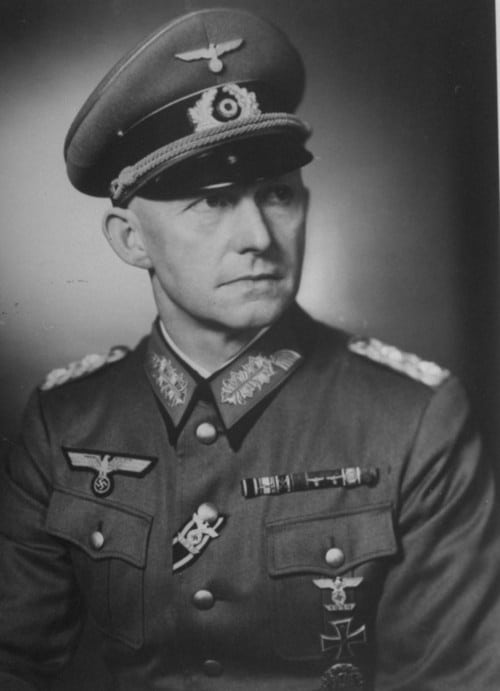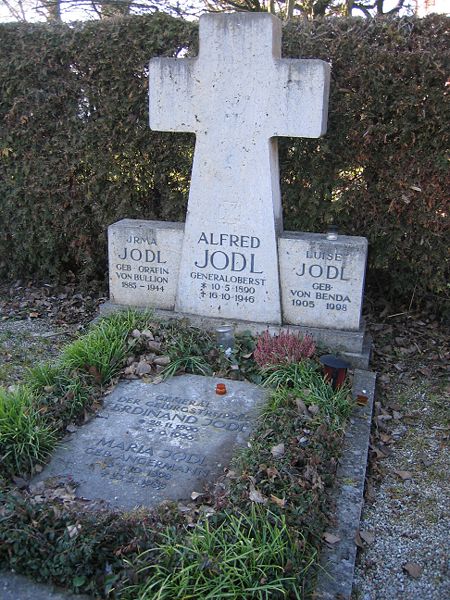John C. Woods, Master Sergeant and U. S. Army hangman, was born in Wichita, Kansas on June 5, 1911. Prior to his induction in the Army on August 30, 1943, he lived in Eureka, Kansas; he was married with no children. After his parents separated, Woods attended high school for one year, before dropping out. In 1933, he joined the Civilian Conservation Corps, but was dishonorably discharged on September 27, 1933 after being AWOL for six days and refusing to work. At his induction, he was listed as having blue eyes, brown hair with a ruddy complexion, standing 5’4½” tall and weighing 130 pounds. He reported to basic training on September 19, 1943; in early 1944, he deployed on a troopship to England and was assigned to FFRD #4. On March 30, 1944, he was assigned to Company B of the 37th Engineer Combat Battalion in the 5th Engineer Special Brigade. Morning reports for that unit do not indicate that Woods was ever absent from the command in the first six months; he therefore likely took part in the Normandy Invasion, where Company B invaded Omaha Beach, losing 4 KIA, 15 WIA and 3 MIA in just the first day.
Woods left Company B on October 3, 1944 for duty in the Normandy Base Section. He was attached to the 2913th Disciplinary Training Center in 1944; orders in December 1944 show him assigned to the Provost Marshal Section in the Headquarters of the Brittany Base Section. Woods was formally assigned to the 2913th Disciplinary Training Center on February 12, 1945; on May 7, 1945, he was assigned to the Headquarters of the Normandy Base Section, but was attached back to the 2913th for duty.
However, unknown to the Army, there was a dark secret about John C. Woods. On December 3, 1929, John Woods joined the United States Navy. He reported to the west coast. After initial training, he received an assignment for the U.S.S. Saratoga. Within months, Woods deserted. Authorities apprehended him in Colorado and returned him to California, where he received a General Court-Martial. After the conviction, a Navy medical officer recommended that a medical board examine Woods. This happened on April 23, 1930. The report following the examination read:
“This patient, though not intellectually inferior, gives a history of repeatedly running counter to authority both before and since enlistment. Stigmata of degeneration are present and the patient frequently bites his fingernails. He has a benign tumor of the soft palate for which he refuses operation. His commanding officer and division officers state that he shows inaptitude and does not respond to instruction. He is obviously poor service material. This man has had less than five months service. His disability is considered to be an inherent defect for which the service is in no way responsible. [He] is not considered a menace to himself or others.”
The report also provided a diagnosis for John Woods – Constitutional Psychopathic Inferiority without Psychosis. The Navy then discharged him.
On September 3, 1945, Master Sergeant Woods was released from attachment and assigned to the Headquarters CHANOR Base Section. During 1944 and 1945, Master Sergeant Woods hanged about thirty U.S. soldiers, who had been sentenced to death. After the war, he hanged dozens of Nazi war criminals at the Landsberg Military Prisoner, often in conjunction with Johann Reichhart – who had executed thousands of condemned persons during the Third Reich. Woods gained international fame in October 1946, as the official hangman for the International Military Tribunal at Nürnberg. Woods executed ten senior German military and civilian officials previously convicted of egregious crimes against humanity, crimes against peace and war crimes – the condemned included Field Marshal Wilhelm Keitel, Colonel General Alfred Jodl, former head of the SS Ernst Kaltenbrunner, former Foreign Minister Joachim von Ribbentrop, Alfred Rosenberg, Hans Frank, Wilhelm Frick, Julius Streicher, Fritz Sauckel and Arthur Seyss-Inquart. Post-execution photos indicate that the trap door mechanism was flawed and that several of the condemned hit the door with their face as they plummeted downward. During his supposed 15-year career as a hangman, he reportedly executed 347 men, but this is undoubtedly a large exaggeration as Woods was a heavy drinker and self-aggrandizer. An 11-year search of military records indicates that it is far more likely that Woods had a 2-year career and hanged 60-100 men.
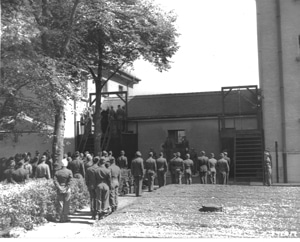
Dual gallows at Landsberg Military Prison, May 1946. Johann Reichhart hanged the condemned on the right gallows. Master Sergeant John C. Woods used the left gallows.
Master Sergeant Woods was accidentally electrocuted on July 21, 1950 on Eniwetok Atoll, while attempting to repair an engineer lighting set (not while constructing an electric chair, which is part of his myth. Another anecdote from Europe after his death was that German scientists on Eniwetok as part of Operation Paperclip murdered Woods and made it look like an accident.)
He was survived by his wife.
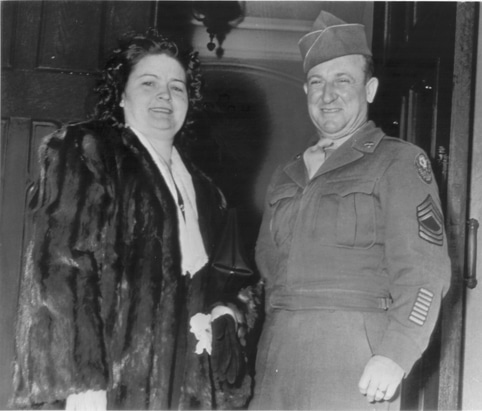
John C. Woods with wife in 1946; this photo and several others of Woods in The Fifth Field were graciously supplied by the Associated Press archives
Woods is buried in the modest city cemetery in Toronto, Kansas, a small town 60 miles east of Wichita. John C. Woods received no individual military awards during his career for his service as a hangman.
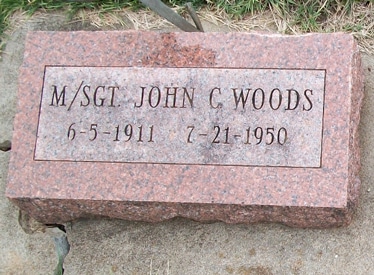
Grave stone for Master Sergeant John C. Woods
